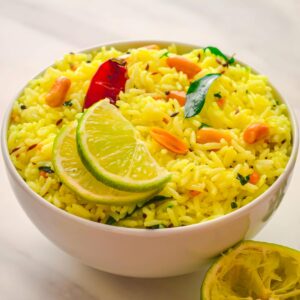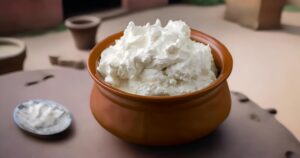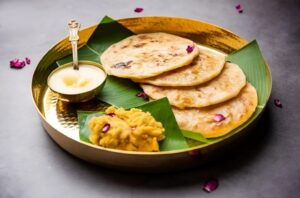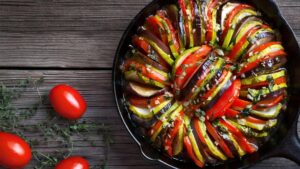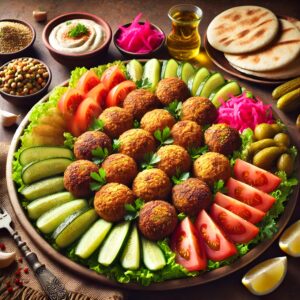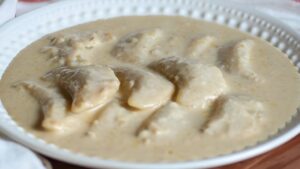Paneer Lababdar Recipe
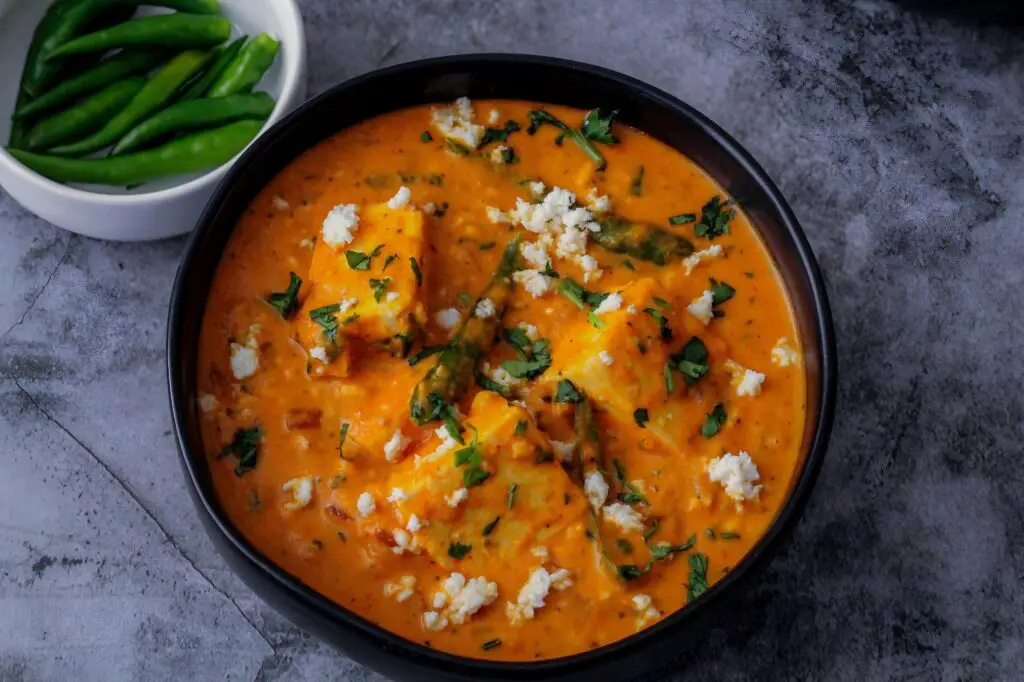
Introduction:
Paneer Lababdar is a rich and creamy North Indian dish made with soft paneer cubes (Indian cottage cheese) in a thick, tomato-based gravy. It’s a luxurious and flavorful dish, often found in Indian restaurants, that can be enjoyed with roti, naan, or steamed rice. The dish derives its name from the word “Lababdar,” which suggests something indulgent and desirous. The use of aromatic spices, cream, and cashews makes this dish stand out as a favorite for those who enjoy Indian vegetarian cuisine. While it may seem complex, making Paneer Lababdar at home is surprisingly simple with the right ingredients and techniques.
In this detailed recipe, we will break down each step carefully to ensure that you achieve a restaurant-style Paneer Lababdar at home. From the preparation of the paneer to the making of the rich gravy, every part of this dish is important to bring out the authentic flavors.
Ingredients:
For the Paneer:
- 250 grams of paneer (cubed)
- 1 tablespoon of butter
- 1 tablespoon of oil (vegetable oil or ghee)
For the Lababdar Gravy:
- 4 medium-sized tomatoes (roughly chopped)
- 1 medium onion (finely chopped)
- 8-10 cashews (soaked in warm water for 20 minutes)
- 2-3 garlic cloves
- 1-inch piece of ginger
- 1-2 green chilies (optional, for heat)
- 1 teaspoon cumin seeds
- 1 teaspoon coriander powder
- 1 teaspoon cumin powder
- 1 teaspoon garam masala
- 1/2 teaspoon turmeric powder
- 1 teaspoon red chili powder (adjust to taste)
- 1 teaspoon sugar (optional)
- 1/4 cup fresh cream (or 2 tablespoons of milk for a lighter version)
- 1 tablespoon kasuri methi (dried fenugreek leaves)
- Salt to taste
- 2 tablespoons butter
- 2 tablespoons oil (vegetable or sunflower oil)
For Garnishing:
- Fresh coriander leaves (finely chopped)
- 1 tablespoon grated paneer (optional)
- A dash of cream
Step-by-Step Recipe:
Step 1: Preparing the Paneer
If you are using store-bought paneer, make sure to soak the paneer cubes in warm water for 15 minutes before cooking. This helps soften the paneer and gives it a fresh, tender texture. If you’re using fresh homemade paneer, you can skip this step.
- Cut the paneer into medium-sized cubes (approximately 1-inch pieces).
- Heat 1 tablespoon of butter and 1 tablespoon of oil in a non-stick pan on medium heat.
- Once the butter melts, gently place the paneer cubes into the pan and lightly fry them until they turn golden brown on all sides. Be careful not to over-fry the paneer, as it can become tough.
- Remove the paneer cubes and set them aside on a paper towel to drain any excess oil. This step helps to add texture to the paneer while still keeping it soft inside.
Step 2: Making the Cashew-Tomato Base
The richness of Paneer Lababdar comes from its creamy tomato-cashew base. This base provides the smooth and silky texture that complements the paneer perfectly.
- Soak the cashews in warm water for about 20 minutes before blending.
- Roughly chop the tomatoes and set them aside.
- In a blender, combine the soaked cashews, tomatoes, ginger, garlic, and green chilies. Blend until you get a smooth paste. The cashews give a creamy texture to the gravy without needing too much cream, making the dish lighter.
- Set the paste aside.
Step 3: Preparing the Lababdar Gravy
Now that we have the paneer ready and the base prepared, let’s move on to making the rich and flavorful gravy.
- In a large pan or kadhai, heat 2 tablespoons of oil and 2 tablespoons of butter on medium heat.
- Add 1 teaspoon of cumin seeds and let them splutter.
- Add the finely chopped onions and sauté them until they turn golden brown. This step is essential because the caramelized onions will add sweetness and depth to the gravy.
- Once the onions are browned, add the blended tomato-cashew paste and cook on medium heat. Stir occasionally to prevent sticking.
- After 5-7 minutes, when the oil starts to separate from the gravy and the raw smell of the tomatoes disappears, reduce the heat to low.
- Add the dry spice powders: coriander powder, cumin powder, turmeric powder, red chili powder, and garam masala. Cook for another 2-3 minutes, stirring continuously to ensure the spices are evenly distributed.
- If the gravy becomes too thick, add 1/4 cup of water and mix well. Continue to cook for a few more minutes to let the flavors meld together.
- Season the gravy with salt to taste and add a pinch of sugar if the tomatoes are too tangy.
Step 4: Adding the Paneer to the Gravy
Now that the gravy is ready, it’s time to bring in the paneer. The combination of soft paneer cubes and rich gravy makes this dish special.
- Gently add the fried paneer cubes to the gravy and mix well, ensuring that the paneer is evenly coated with the gravy.
- Lower the heat and allow the paneer to simmer in the gravy for 3-4 minutes. This step will allow the paneer to absorb the flavors of the spices and the creamy base.
- Crush the kasuri methi (dried fenugreek leaves) between your palms and sprinkle it over the dish. Kasuri methi adds a subtle earthy and bitter taste that balances the richness of the dish.
- Stir in 1/4 cup of fresh cream to make the gravy more indulgent. You can adjust the cream quantity based on your preference – more cream for a richer taste or less for a lighter version.
- Turn off the heat and cover the pan, allowing the paneer to rest in the hot gravy for a few minutes. This resting time helps enhance the flavors.
Step 5: Garnishing and Serving
Paneer Lababdar is best served hot with a garnish that adds freshness and visual appeal to the dish.
- Garnish the Paneer Lababdar with finely chopped fresh coriander leaves and a swirl of fresh cream on top.
- For an added layer of texture and presentation, you can also grate a little paneer over the dish before serving.
- Serve Paneer Lababdar with hot butter naan, tandoori roti, paratha, or jeera rice. The richness of the dish pairs beautifully with these Indian breads or rice preparations.
Tips and Tricks for the Perfect Paneer Lababdar:
Paneer Softness: If you’re using store-bought paneer, always soak it in warm water for 10-15 minutes. This helps in making the paneer softer and prevents it from becoming rubbery when added to the gravy.
Spice Level: Adjust the amount of red chili powder and green chilies according to your heat preference. For a spicier version, increase the quantity of both.
Kasuri Methi: Dried fenugreek leaves (kasuri methi) add a distinctive flavor to the dish, so don’t skip this ingredient. It provides a slight bitterness that balances out the creaminess of the gravy.
Consistency: The consistency of the gravy can be adjusted to your preference. If you prefer a thicker gravy, cook it longer, allowing the water to evaporate. For a thinner consistency, add more water or cream.
Cream or Milk: If you want to reduce the richness, you can substitute cream with milk. However, using cream gives the dish a more authentic restaurant-style texture and taste.
Nutty Flavor: The soaked cashews used in the tomato base give a nutty flavor and creamy texture to the dish. If you’re allergic to nuts, you can skip the cashews and add a little more cream.
Variations of Paneer Lababdar:
Veg Lababdar: If you want to switch things up, you can make a vegetarian version by replacing the paneer with mixed vegetables like carrots, beans, peas, and potatoes. This variation is called Veg Lababdar and is equally delicious.
Paneer Butter Lababdar: For an even more indulgent version, increase the butter in the recipe and make Paneer Butter Lababdar, which is a richer, creamier variant with extra butter and cream.
Healthier Version: To make a healthier version, reduce the amount of cream and butter, and increase the use of spices and kasuri methi for flavor. You can also air-fry the paneer instead of frying it in butter and oil.
Conclusion:
Paneer Lababdar is an exquisite dish that’s loved for its richness and flavor. The combination of soft paneer cubes and a creamy, spiced tomato gravy makes it a go-to dish for special occasions and dinners. While it might seem like a complicated recipe, breaking it down into manageable steps—like preparing the paneer, making the cashew-tomato base, and cooking the gravy—makes the process enjoyable. Whether you’re making it for a family dinner or impressing guests, Paneer Lababdar is sure to be a hit!
Here are 10 frequently asked questions (FAQs) based on the Paneer Lababdar recipe:
1. Can I use store-bought paneer for this recipe?
Yes, you can use store-bought paneer. To make it softer, soak the paneer cubes in warm water for 10-15 minutes before cooking.
2. Can I skip frying the paneer cubes?
Frying the paneer is optional. If you prefer softer paneer, you can skip frying and directly add the paneer to the gravy. However, lightly frying gives the paneer a firmer texture and prevents it from breaking.
3. How can I make Paneer Lababdar healthier?
You can make it healthier by reducing the amount of butter and cream. Use milk instead of cream and air-fry or skip frying the paneer to cut down on fat.
4. Can I make this dish vegan?
Yes, to make it vegan, replace paneer with tofu and use cashew cream or coconut cream instead of dairy cream. Also, substitute butter with vegan butter or more oil.
5. How can I adjust the spice level of the gravy?
You can reduce the amount of red chili powder or skip the green chilies if you prefer a milder taste. Conversely, increase these ingredients if you like it spicier.
6. What is the role of cashews in this recipe?
Cashews add a creamy and rich texture to the gravy without the need for excessive cream. They also contribute a subtle nutty flavor to the dish.
7. Can I prepare the gravy in advance?
Yes, you can prepare the gravy ahead of time and refrigerate it for up to 2 days. When ready to serve, heat the gravy and add the paneer cubes just before serving.
8. What can I use instead of kasuri methi?
While kasuri methi (dried fenugreek leaves) adds a unique flavor, you can skip it if unavailable. A small pinch of fenugreek powder could be used as an alternative, but it may not provide the same aroma.
9. What can I serve Paneer Lababdar with?
Paneer Lababdar pairs well with Indian breads like naan, roti, and paratha, as well as with steamed basmati rice, jeera rice, or pulao.
10. How do I prevent the gravy from becoming too thick?
If the gravy thickens too much, you can add a little water or milk to adjust the consistency. Stir well after adding liquid to ensure a smooth texture.

